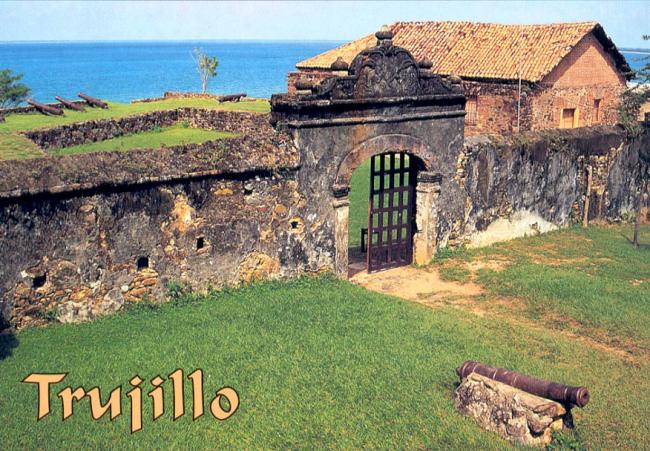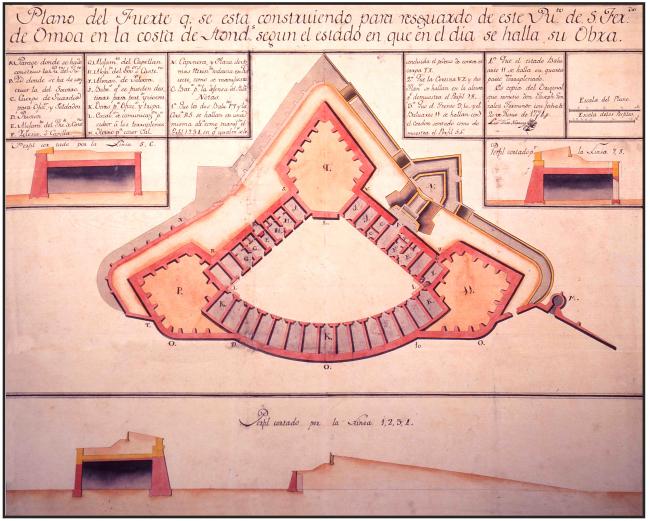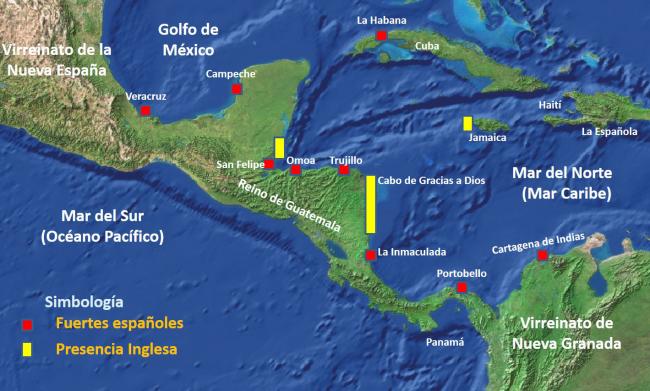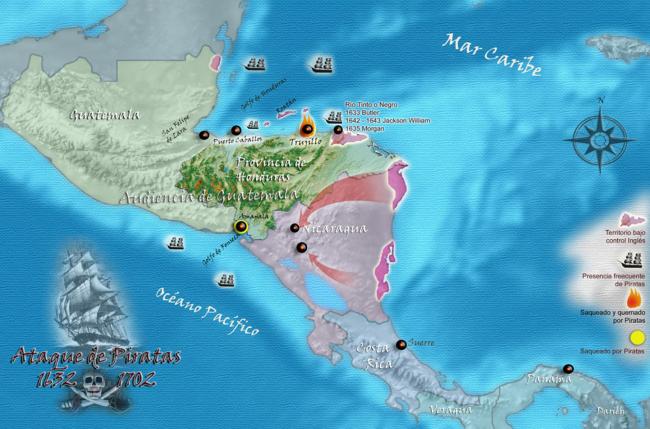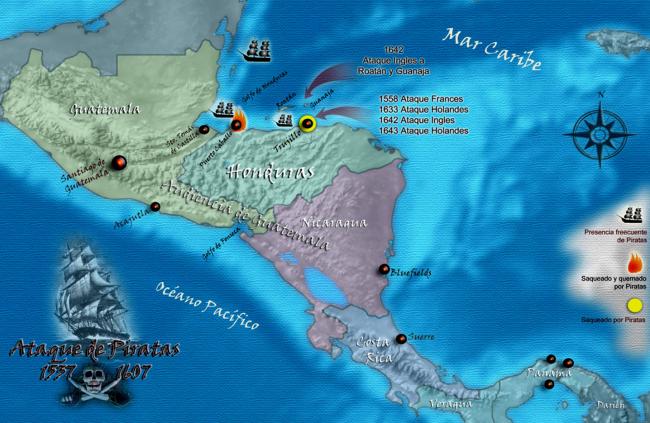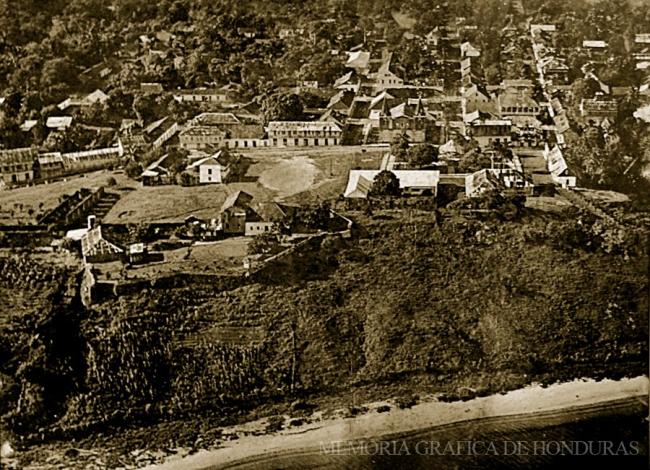Throughout the colonial period, Spain faced constant threats of foreign attacks against its colonies on the Caribbean shores.
Santa Barbara Fortress in Trujillo
In many strategic places minor forts were also built, as the one of Trujillo, and at the same time, regular armed forces were introduced for the first time and distributed in forts, prisons and castles. From the beginning of the 17th century, the first militia forces of neighbors, led by members of the local elites and made up of white, black, mulatto or mestizo companies, depending on the area, began to organize themselves.
As the 18th century progressed, the Central American region faced two new dangers. On the one hand, the growing threat of Mosquitoes and Cunas, which had extensive territories under permanent control and assaulted the colonies with firearms supplied by the English. The Cunas occupied a large part of eastern Panama, maintaining a permanent state of war with the colonial administration, and from the end of the XVII century had established alliances with the English.
The Zambos Mosquitos represented perhaps a greater danger. From the beginning of the 18th century, during the War of Succession (1701-1713), instigated by the English, they began to attack ships along the coast and Spanish towns in Honduras, from San Pedro Sula and Trujillo in 1702, Comayagua in 1710, Catacamas in 1730 and Danli in 1738. They also began to attack the interior of Nicaragua, and in Costa Rica they assaulted Suerre and Matina several times from 1720 to 1756, penetrating the Sixaola River on numerous occasions. Their audacity led them in 1728 and 1731 to the Pacific side of western Panama, and they did not cease their assaults on the interior of Panama until 1805, when they allied with local Indians. Some Englishmen sometimes accompanied them in their raids. Mosquitoes looted towns, robbed churches and trapped Indians and blacks who would be sold as slaves.
The Fortress of San Fernando de Omoa
Diez Navarro, who had worked as an engineer in Panama, delineated the projects for the forts of the San Juan River in Nicaragua, and in Honduras he first thought of building a Fortress in Trujillo. But discarded this idea, because of the distance that separated it from the main towns of the interior, and because it was too close to the English settlements in Black River and the Bay Islands. Considering it was better located to protect access to the interior of Honduras, he chose Omoa, for which he elaborated the plans between 1743 and 1745, although it was not until 1752 when the Fort of San Fernando began being built. The original plans were modified by the engineer Francisco Alvarez, who will partially change what was proposed by his predecessor, after he was dismissed and moved to Guatemala. The works were not finished until 1775, but in many aspects it was an unfinished fortress.

